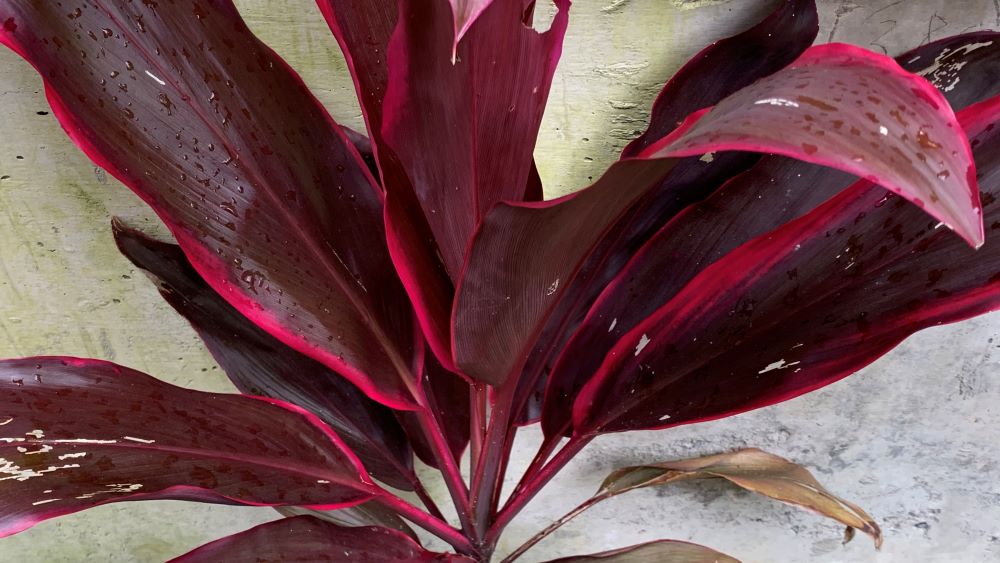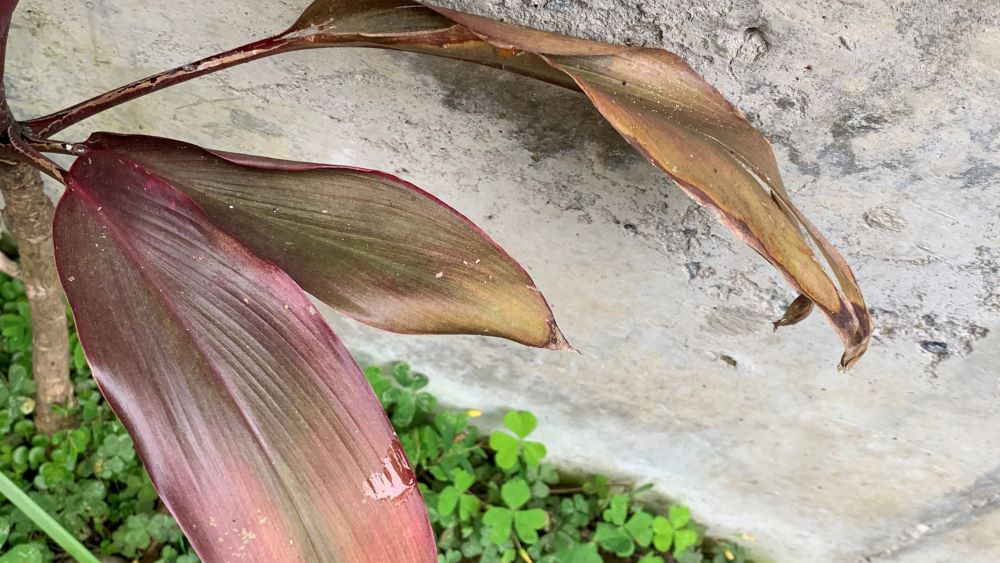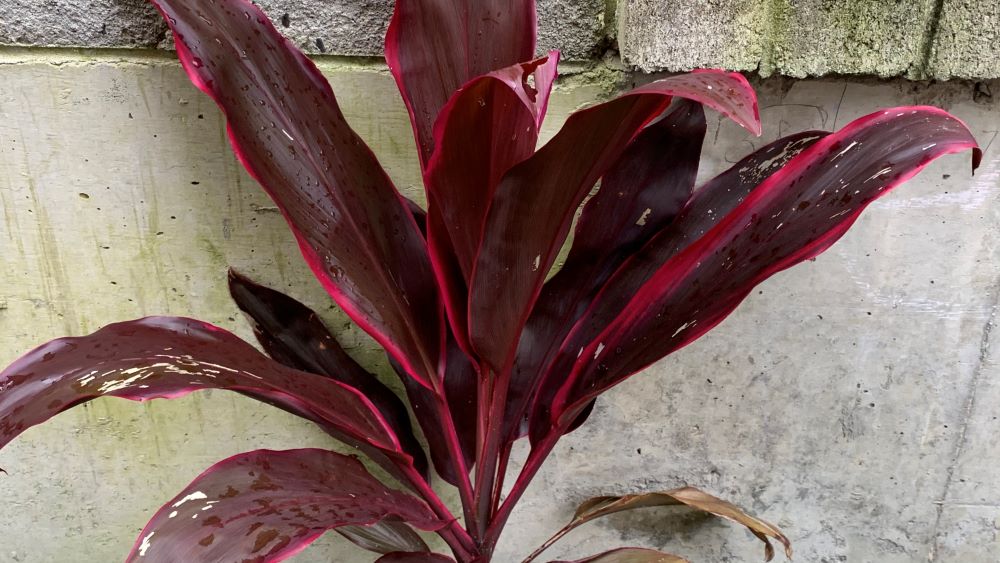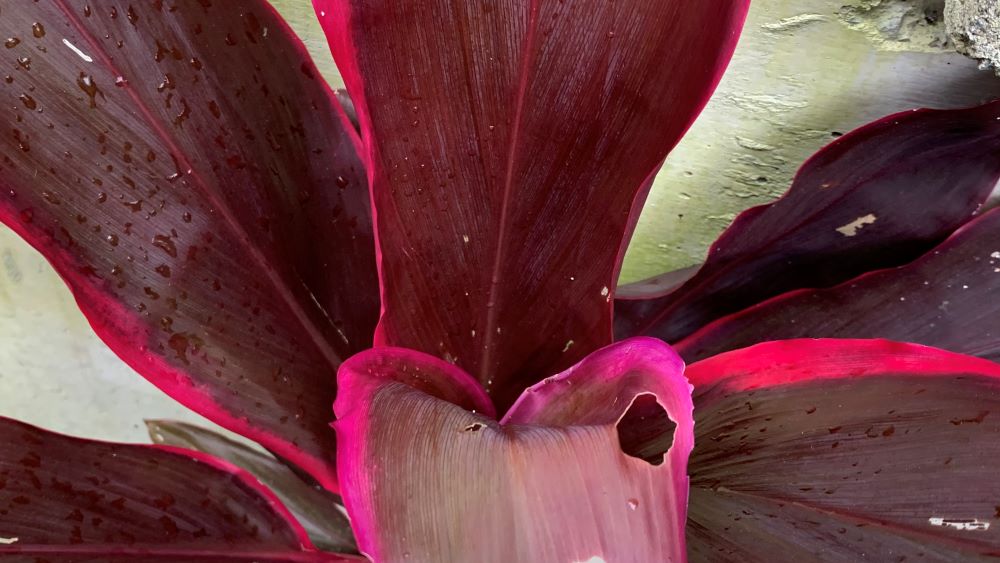The one thing everyone loves about the cordyline plant is its beautiful foliage, which can be red, green, purple, or purplish-red. These are plants that are easy to grow and look fantastic in your home. You can plant them outdoors in a garden or indoors in a pot. Like other plants, cordyline plants can suffer with yellowing leaves, and there are numerous reasons why this happens.
Yellow leaves on the cordyline plants are caused by overwatering, underwatering, too much sunlight, and certain infections, including the Fusarium root rot. We’ll take a look at each of these in more detail and how to fix this problem.

1. Overwatering or Underwatering
Too much or too little water is a bad thing for your cordyline plant. Don’t water these plants every day, and let the soil get fairly dry in between.
The wrong type of water can also turn the leaves green, which is why rainwater or distilled water is usually recommended over tap water. If tap water is all you have, let it sit for a while before watering the plants to help dissipate some of the chlorine in the water.
If you’re curious about how often you should water your cordyline plants, the best thing to do is stick your finger in the soil about 1-2 inches down. If the soil is dry, it is time to water the plant. If it’s moist and damp, there is no need to add any more water to the soil.
2. Too Much Sunlight
The cordyline plant needs abundant light, but it has to be indirect sunlight. The longer the plant stays in direct heat, the worse it is for the leaves of the plant. Indirect sunlight always works best with the cordyline plant.

If you bring your cordyline plant from indoors to outdoors, it can be a shock to its system and can turn the leaves yellow. If you want to bring your cordyline plant outside from the inside of your house, do it slowly to acclimate the plant gently.
3. Fusarium Root Rot Infection
Fusarium root rot isn’t difficult to see because it causes yellow spots on the plant or yellow leaves at the bottom of the plant, especially the younger leaves. It also causes the roots of your plant to become black and look like they are water-soaked. Both root rot and stem rot can be caused by the Fusarium infection.
Solution
If you determine that Fusarium root rot is the problem with your cordyline plant, it’s best to go ahead and destroy the plants as soon as you notice it. Afterwards, you can actually prevent this type of infection from occurring by making sure the leaves never get too wet.
Water the plant only as much as you need to, then stop. You have to make sure the leaves stay dry to avoid the Fusarium infection.
Other Causes of yellow leaves on Cordyline
Some of the causes of yellowing leaves in the cordyline plant are less common but still worth mentioning, such as:
- Rapid fluctuations in temperature
- An abrupt rise in temperature
- Cordyline plants grown in pots may turn the leaves yellow
As a general rule, cordyline plants should be kept away from direct heat, such as heaters, and the plants should always have great drainage, which means a soil that drains well and a pot with drainage holes.

Cordyline plants grow best in a garden, but if you must grow yours indoors, make sure you use a pot with drainage holes and well draining, premium potting soil.
As the cordyline plant ages, it will naturally shed off its older leaves. Because of this, the plant is allowed to grow very tall. Also, older leaves often turn yellow before they fall off the plant. You might want to wait if you see yellow leaves because they might fall off before you get a chance to do anything about it.

When it comes to specific variants of the cordyline plant, keep in mind that the cordyline fruticosa leaves will yellow if you water them too much or not enough. Too much watering causes yellowing around the leaves’ edges and tips.
The pink diamond variety of cordyline also suffers with yellow leaves due to overwatering, underwatering, and stem or root rot.
Are Cordyline Plants Low Maintenance?
Cordyline plants are low-maintenance because all they really need to grow and thrive is water and sun. There are some rules to successfully growing these plants, of course, but they do not require a lot of action on your part because they are so easy to grow.
That being said, the basic rules when growing cordyline plants are to make sure they are never underwatered or overwatered and never place them in direct sun.

As soon as you start noticing that the leaves are turning yellow, it is time to take action. Fortunately, with the exception of the Fusarium infection, there is no need to discard the plant because you can easily do something about the problem.
Conclusion
Cordyline plants are attractive and easy to grow, but since their leaves are usually brightly colored and come in various shades of red, green, and purple, it’s easy to notice that something’s wrong once the leaves start turning yellow.
Fortunately, the problem can usually be resolved in one of two ways: make sure the plant is properly watered and make sure it gets the right amount of sunlight. The plants make great indoor plants but also look great in a garden outside of your home.
Cordyline plants are also known as Ti plants, and they can get to about 10 feet tall in optimum conditions. They are also known as the Hawaiian good luck plant, and they look amazing regardless of where you plant them.
Cordyline plants have amazing leaves that you can easily take care of when they turn yellow, and once you learn to do this, you can enjoy them for many years to come.
I am an accredited practicing dietitian, experienced gardener and a dedicated cook. I love writing and sharing my experience so you can learn from my successes and mistakes.
